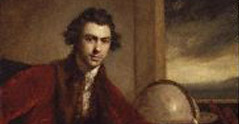|
COLONIAL DISCOURSES
Series Three: Colonial Fiction, 1650-1914
Part 1: General Works and Fiction from India from the British Library, London
Part 2: General Works and Fiction from India from the British Library, London
Part 3: General Works and Fiction from India from the British Library, London
Publisher's Note - Part 1
This commences with a number of general works relating to colonial policy, such as:
- Woodes Rogers, A Cruising Voyage Round the World (1712)
- Patrick Colquhoun, A Treatise on the Wealth, Power and Resources of the British
Empire (1814)
- J A Roebuck, The Colonies of England (1849)
- James Anthony Froude, Oceana; or, England and Her Colonies (1886)
- J A Cramb, Reflections on the Origin and Destiny of Imperial Britain (1915)
These address some of the central themes of the colonial experience, charting the expansion of western influence through sea-borne exploration, the exploitation of resources and peoples and the imposition of western legal and geographical boundaries on the colonised.
There are also a number of non-fictional works describing life in India. These include:
- Marianne Postans, Western India in 1838 (1839)
- Helen Mackenzie, Life in the Mission, the Camp and the Zenana (1853)
- Colin Campbell, Narrative of the Indian Revolt (1858)
- Fanny Peile, History of the Delhi Massacre (1858)
- Adelaide Case, Day by Day at Lucknow (1858)
- Julia Haldane, Story of Our Escape from Delhi (1888)
- Radhabinod Pal, A glimpse of Zenana life in Bengal (1904)
- Thottakadu Ramakrishna, Early reminiscences (1907)
We then commence with coverage of Indian Fiction. We include works published in Britain and India which describe life in India from the East India Company period (1600-1857) through to the period of direct British government control (1858-1947). Some of the titles featured are:
- Frances Sheridan, The History of Nourjahad (1767)
- The Indian adventurer; or, History of Mr Vanneck (1780)
- Sophia Goldsbourne, Hartly House, Calcutta (1789)
- William Hockley Browne, Pandurang Hari (1826)
- Philip Meadows Taylor, Confessions of a thug (1839)
- Michael Madhusudana Data, The Captive Ladie (1849)
- Leopold Paget, Camp and Cantonment: A Journal Of Life in India (1865)
- James Grant, First Love & Last Love: A Tale of the Indian Mutiny (1868)
- M M Dutt, Meghnad Badha (1879)
- Mary Abbott, The Beverleys: a story of Calcutta (1890)
- G A Henty, Rujub the Juggler (1893)
- Kripabai Sathianandhan, Kamala, a Story of Hindu Life (1894)
- Shevantibai Nikambe, Ratanbai: A Sketch of a Bombay High Caste Hindu Young Wife (1895)
- F Anstey, Baboo Bungsho Jaberjee (1897)
- Romesh Dutt, The lake of palms. A story of Indian domestic life (1902)
- Bankim Chander Chatterji, The Abbey of Bliss (1906)
- Bithia Mary Croker, The Company's Servant. A romance of Southern India (1907)
- Thottakadu Ramakrishna, The dive for death. An Indian romance (1911)
- A Madhaviah, Clarinda (1915)
- Flora Annie Steel, Dramatic history of India (29 playlets) (1917)
- A Madhaviah, Lieut Panju, a modern Indian (1920)
- Katherine Maud Diver, Far to seek. A romance of England and India (1921)
This is only a sample of the 102 titles featured in Part 1. Major authors such as Bankim Chander Chatterji, Bithia Croker, Romesh Dutt, G A Henty, A Madhaviah, Flora Annie Steel, and Philip Meadows Taylor are represented by a wide variety of works. There is also poetry by authors such as Edwin Arnold, Toru Dutt, and Manomohana Ghosha, including adaptations of Indian folklore and legends.
There are tales and histories of the Indian Mutiny, of inter-racial love affairs, of the problems of rule in India, and of the problems of being ruled. The variety of British, Anglo-Indian and Indian fiction allow the Indian colonial experience to be viewed from a variety of perspectives.
Another key issue that can be explored is the use of language. Did imperial writers use language to classify, categorise and control their subjects? If so, how did native and settler authors use the same language to challenge colonial authority.
Taken together with the sources published in Series One and Two of this project, these accounts will help to build up a nuanced picture of the colonial experience. They offer a wealth of opportunities for teaching and research.
<back
|
|















